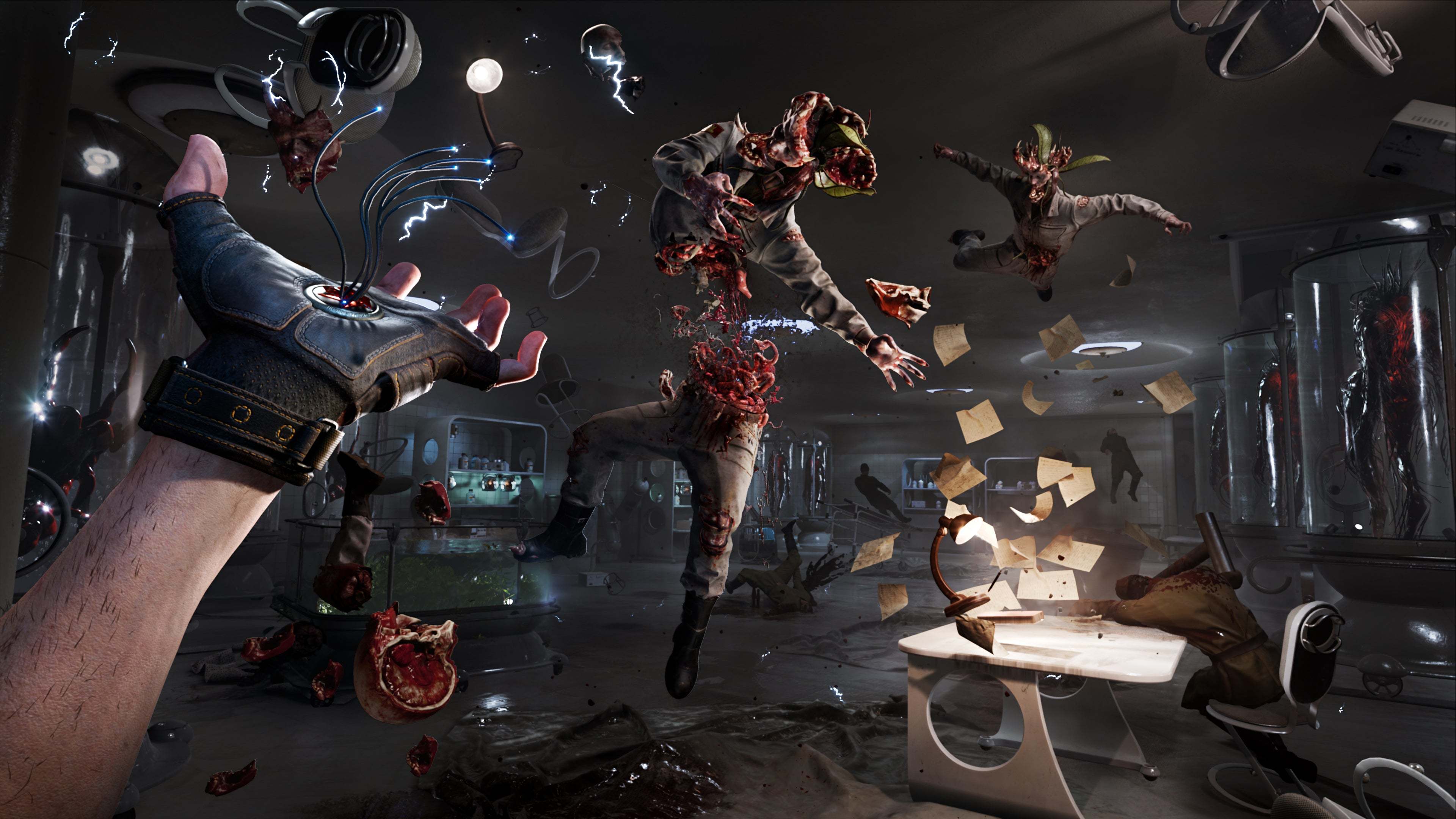What I say may backfire, but I’ve always been a little skeptical of Atomic Heart. The trailers and gameplay that studio Mundfish shared before release made the game extraordinary, and years of disappointment from the trailer made me doubt such an opinion. But anyway, Atomic Heart is here and I’ve been diving into the world for the past few days to see how this long-awaited project is coming to fruition.
Let me start by saying that the graphics and presentation of Atomic Heart live up to the trailers and more. The world is wonderfully realized, beautifully sculpted, teeming with characters, and everything flows incredibly smoothly, with silky smooth frame rates and animations. Atomic Heart’s world, Facility 3826, is definitely one of the most creative I’ve encountered to date, and while it’s very reminiscent of BioShock (especially the floating city of Columbia in BioShock Infinite, which is ironic), because it’s a game based on communism, while Columbia revolves around capitalism and the American dream), it is clear that the Mundfish team gave free rein to their creativity to create this impressive game video.
The first 30 minutes of Atomic Heart is also one of the best video game openings I’ve ever seen, with lots of detail and color bringing this alternate world of the Soviet Union to life, even if it’s fitting to mention that the opening clearly lacks action and agency on the part of the player. The narrative is also interesting and is based on mystery and betrayal: you, the player, are tasked with putting the pieces together to determine why and how the robot population of Facility 3826 lost their minds and what kind of dark secrets and horrible the seemingly perfect utopian society retains. It’s, without a doubt, very BioShock, and I can’t fault it at all, as both the world and the story are excellent.
Advertisement:
But that’s where things start to go wrong in Atomic Heart in my eyes, because the macro of this game, the biggest and most influential parts, are all very good, but the micro, the little details that make reference to actual gameplay They tend to fight. For example, to fight. The robots and enemies you have to deal with are brilliantly designed and at times downright scary. But fighting them is a chore because Atomic Heart is a pretty stiff game in practice. You can’t sprint, you’re not supposed to fight every bot (although you can if you want), and the gameplay has been designed in such a way that it’s not as smooth as other FPS games. . This all culminates in an experience where I found myself avoiding combat whenever I could, because while the shooting mechanics are well-designed and optimized, movement and melee fall short. It’s slow and frustrating, and it feels like you’re still fighting the game to push protagonist P-3 (aka Major Nechaev) into a more exciting, generic action hero. In contrast, the dubbing of the Spanish version by Roberto Encinas wins the whole character.
Add to that the fact that ammo is hard to come by, and even acquiring and upgrading new weapons is a pain because Atomic Heart has an overwhelming resource system, which is overly complicated. You’ll need to gather lots of different resources to be able to upgrade P-3’s weapons and abilities, and looting is also over-implemented (you’ll walk into a room and find that you have to open all the drawers, desks, cabinets, chests, shelves, etc.) to acquire a minimum of resources).
Advertisement:
Still, the world is amazing to behold and navigate, even if it doesn’t really beg to be explored. The closed world is designed in such a way that the player is supposed to follow the main lines of the story and when he decides to explore other places, he never finds anything interesting. The game does its best to keep the excitement going by using the Kollektiv Neural Network combat system, which will send robotic reinforcements anywhere on the map where you cause trouble or are simply detected by one of the hundreds of cameras intrusive. But, given that you’re never looking for a fight, this response system feels a bit out of touch with what Atomic Heart really wants to be as a game.
And I say that because it’s clear that Atomic Heart wants to be more like BioShock 1 and 2 than Infinite. However, the gameplay is fundamentally designed to resemble what Infinite brought to the table, with plenty of combat opportunities in a flashy, albeit empty, world that was simply created as a platform to tell the story. , and nothing else. For me, all of this gives Atomic Heart a sense of emptiness, where on the one hand I can’t help but drool and celebrate the narrative and world design, but on the other hand I struggle to find entertainment and excitement when I’m immersed in it in the gameplay.
I’ll also add that there are some aspects that are really awful, like P-3’s voice acting and the dialogue he shares with his talking glove. It’s flat, boring, and always makes you sigh in disappointment when one of you says something incredibly dumb and silly reminiscent of Duke Nukem. Luckily, the gauntlet is at least useful as a tool, and can be used for one of many abilities, including telekinesis and frost attacks, which are useful for interacting with the world and slowing down enemies, this which you have to admit. and makes combat a bit more enjoyable – though it’s by no means a complete solution.
It probably won’t surprise anyone to say that a game the size of Atomic Heart also has its fair share of bugs and clunky design fixes, because from what I’ve experienced, it does. From doors that don’t open to repeated dialogue, to levels designed so that enemies corner you against rough terrain and beat you to death without you being able to move or counter them, I’ve died multiple times without fail of mine, and as much, if not more, I had to leave the main menu to get the game running again.
Hopefully Mundfish can fix some of these issues before launch, because there’s a lot to love about this game. The graphics are as “next-gen” as you can find, the world is wonderful, the audio and soundtrack are top notch and the narrative is very interesting and engaging. If not for its crude and overly complicated nature, Atomic Heart would probably be one of the best games of the year, so it’s a shame it’s let down by such a long list of minor but common issues.



